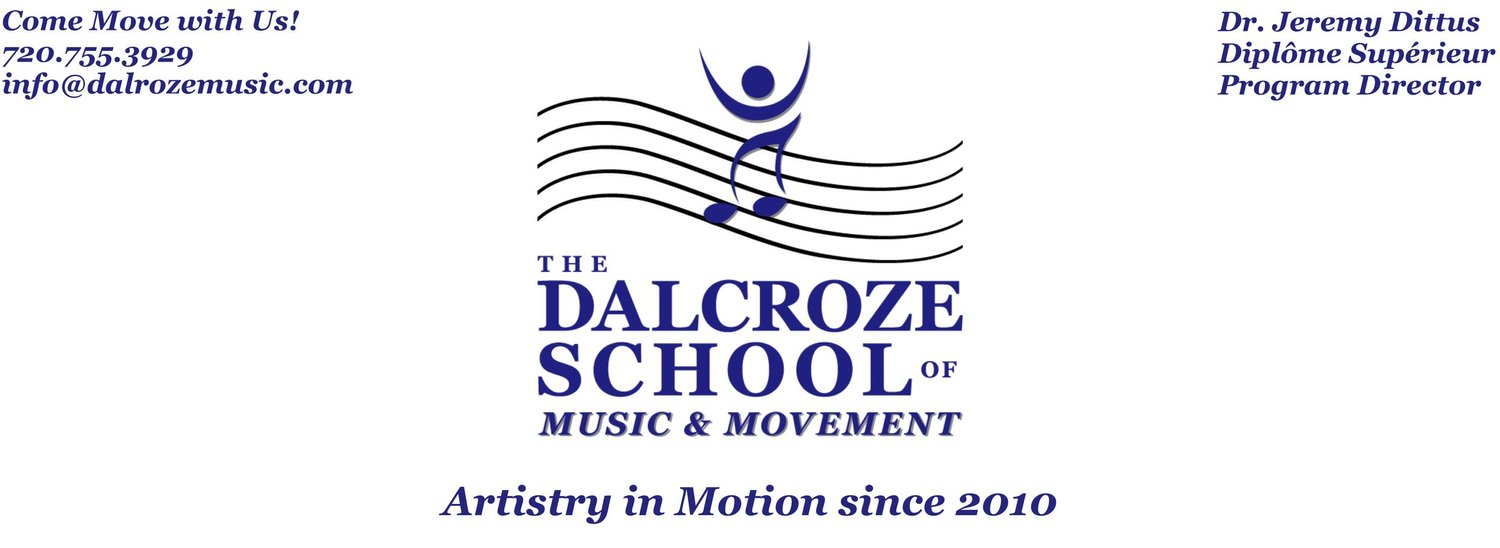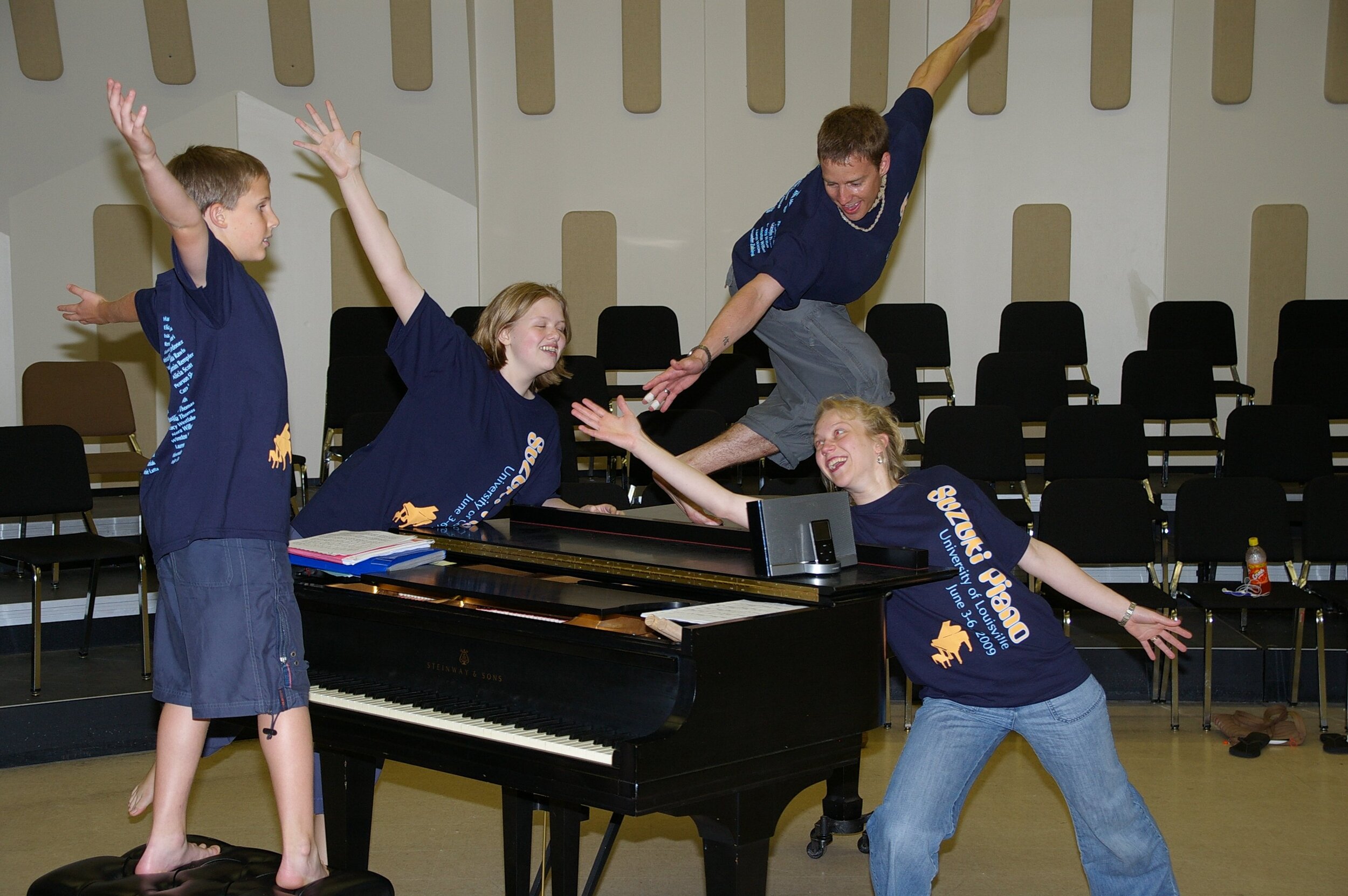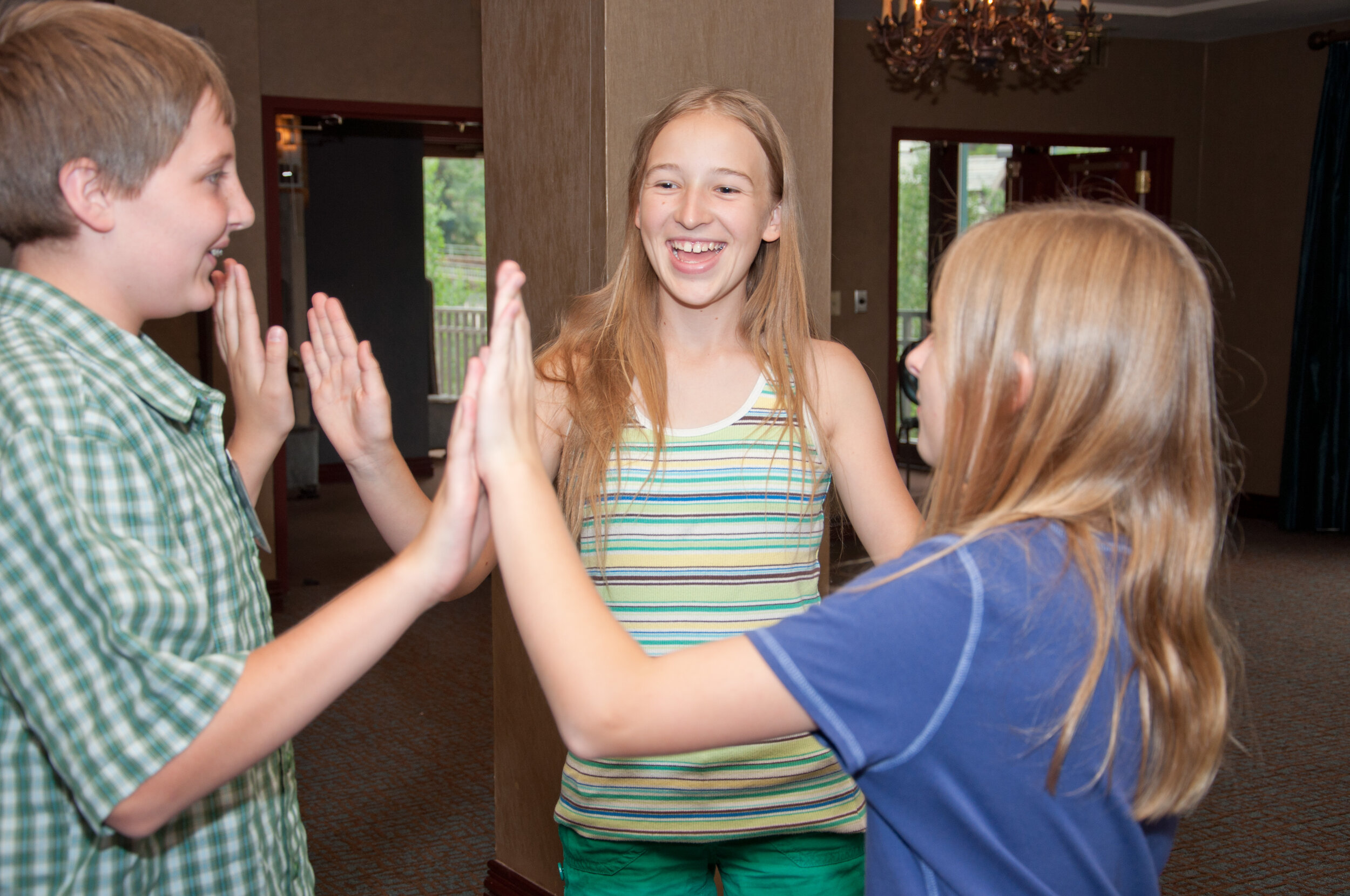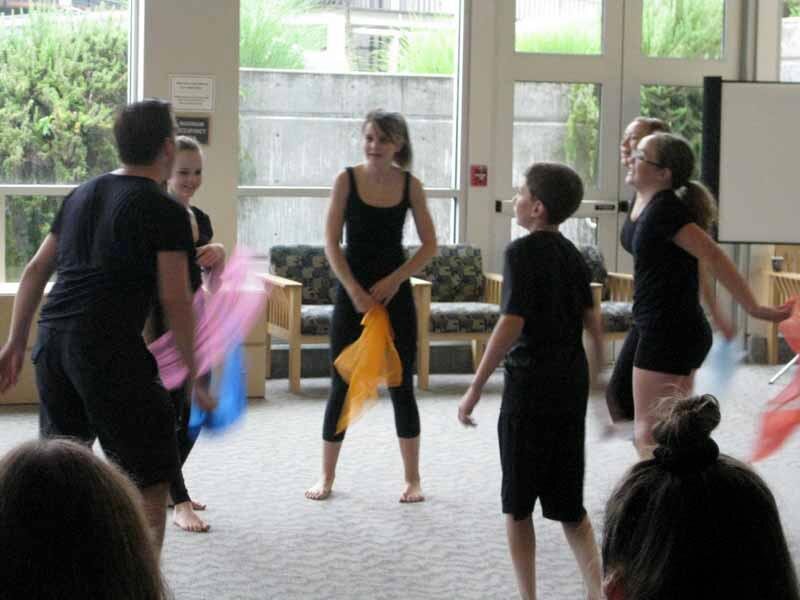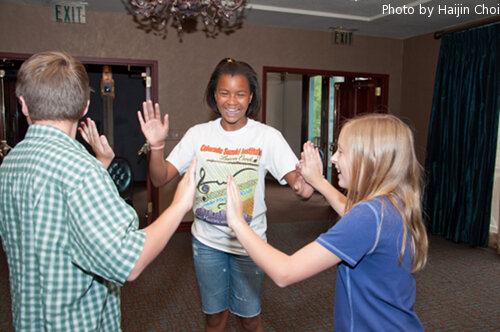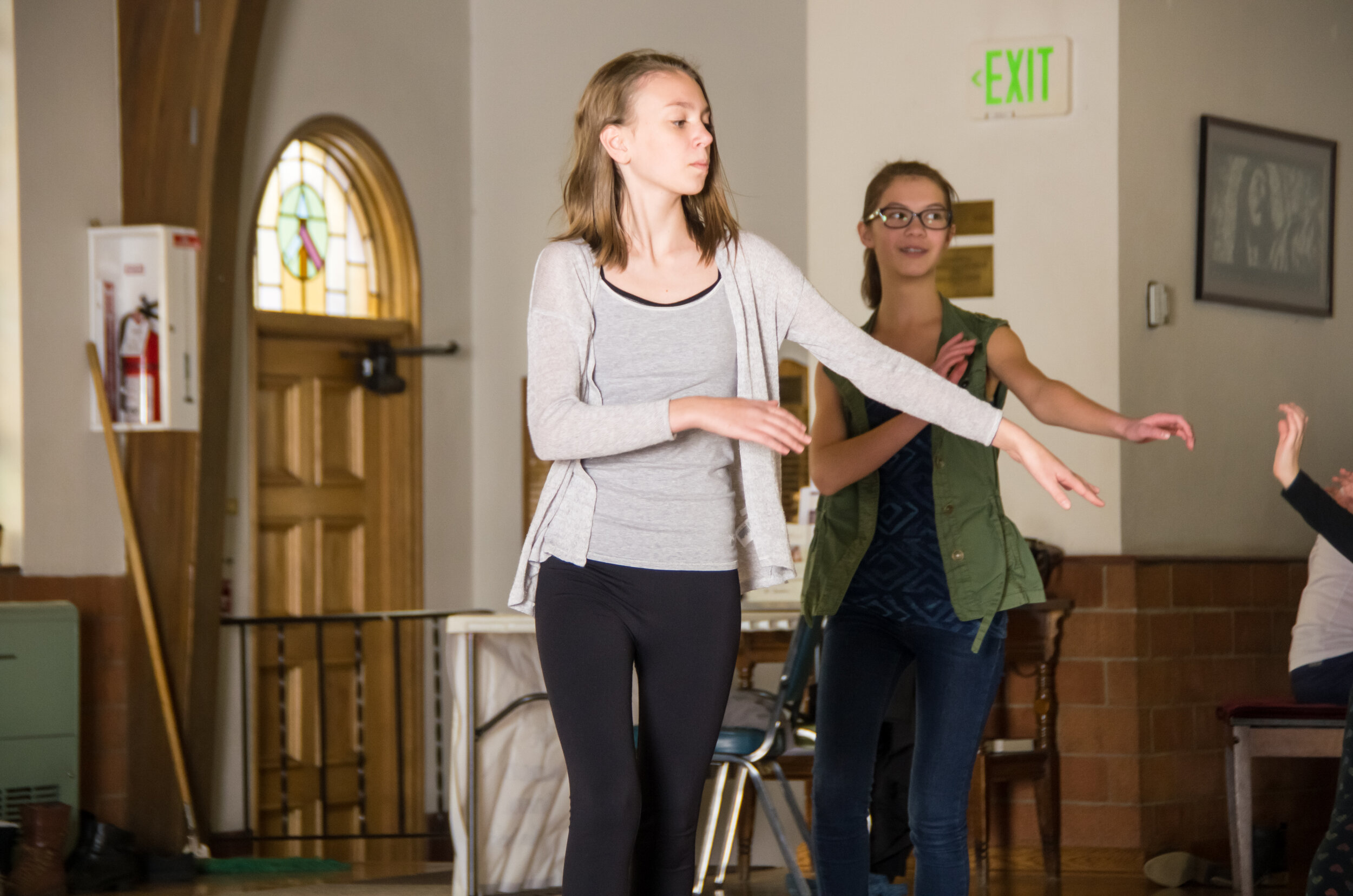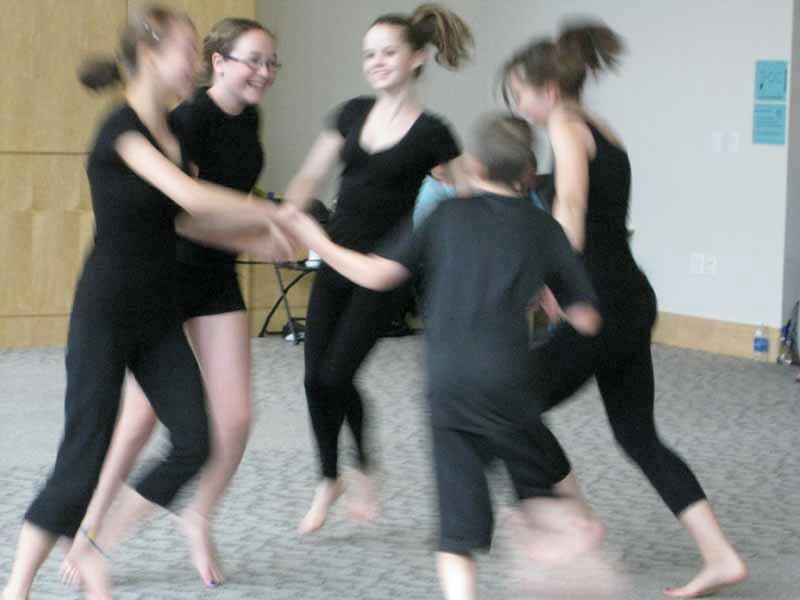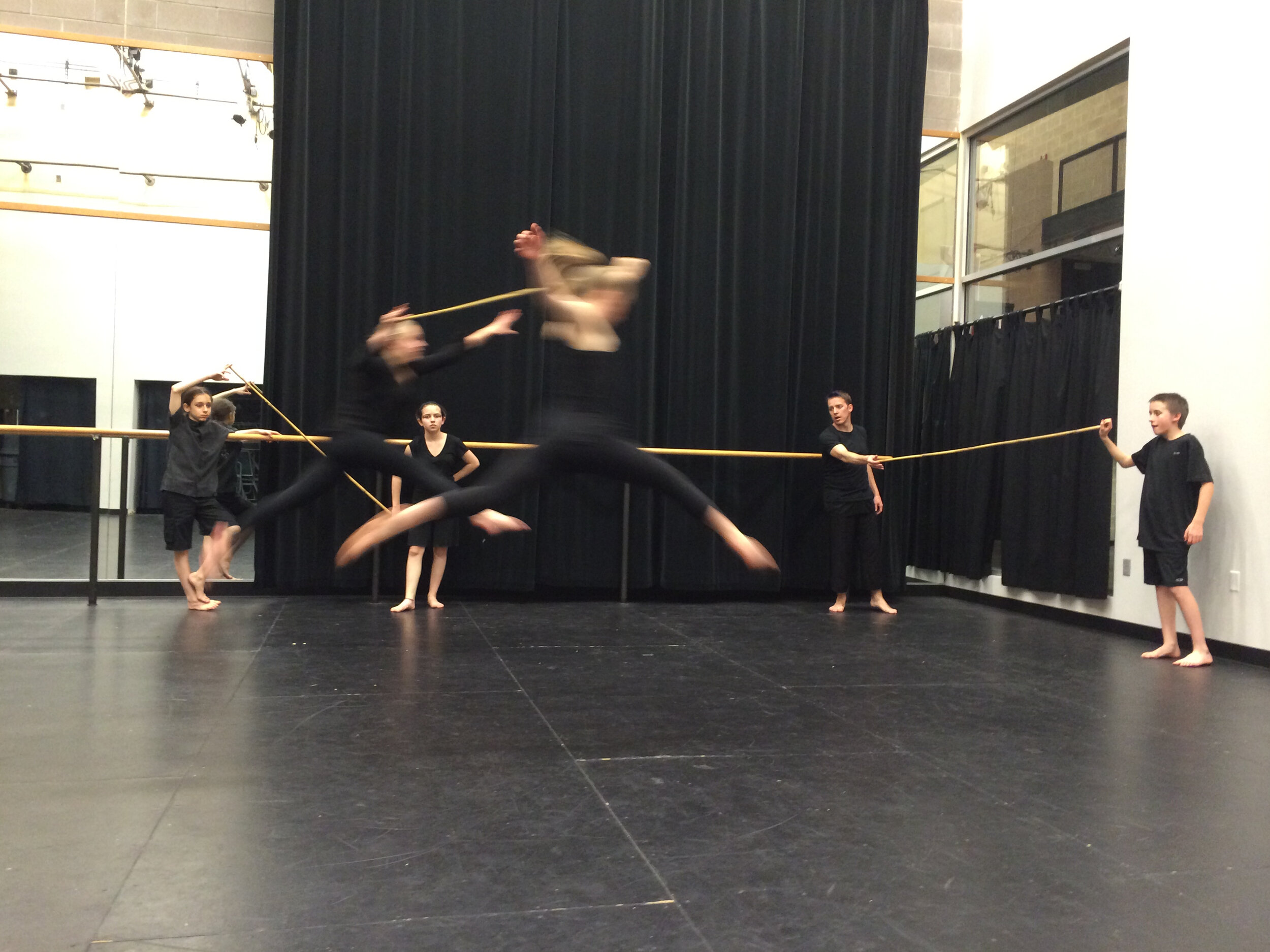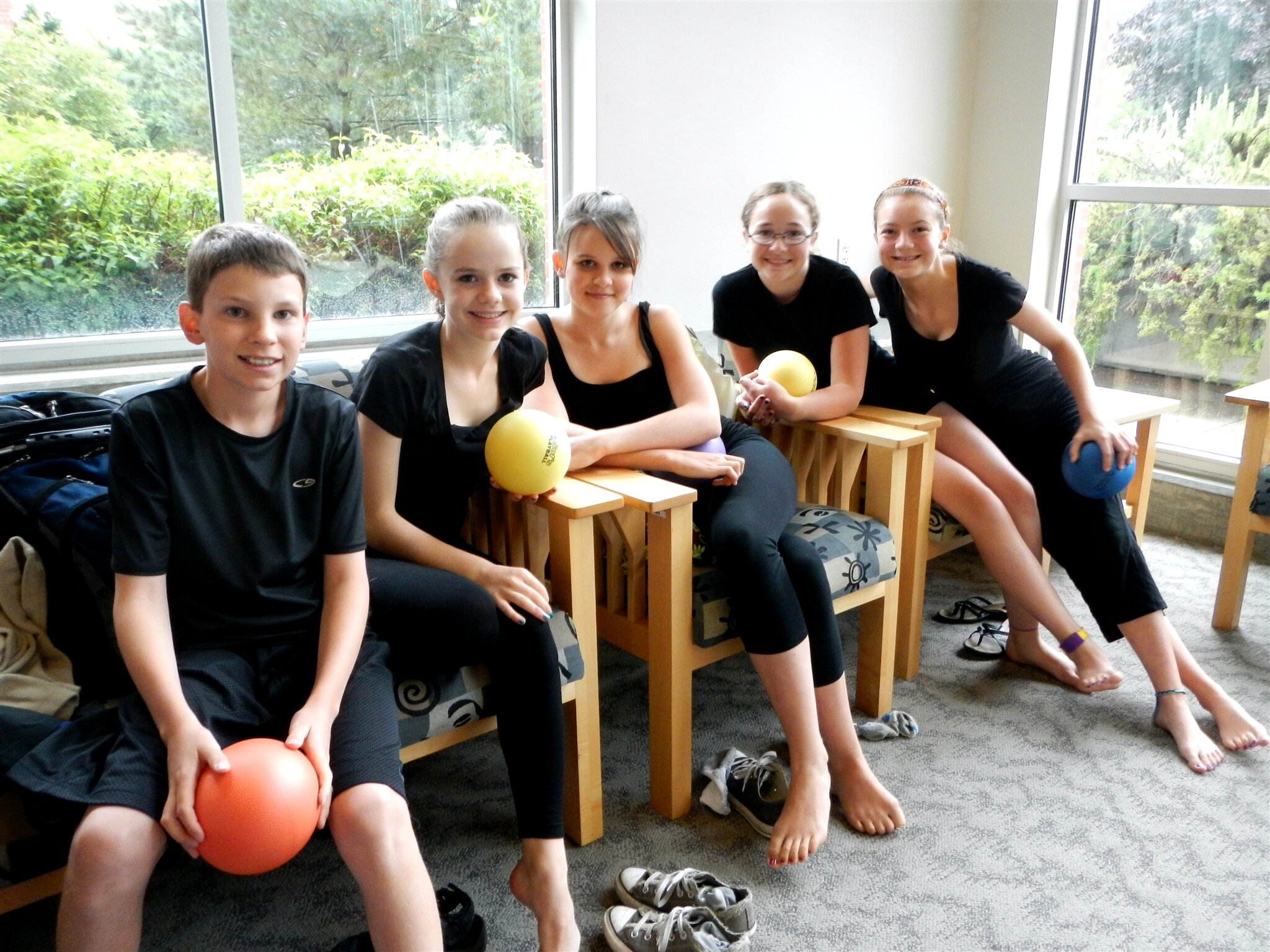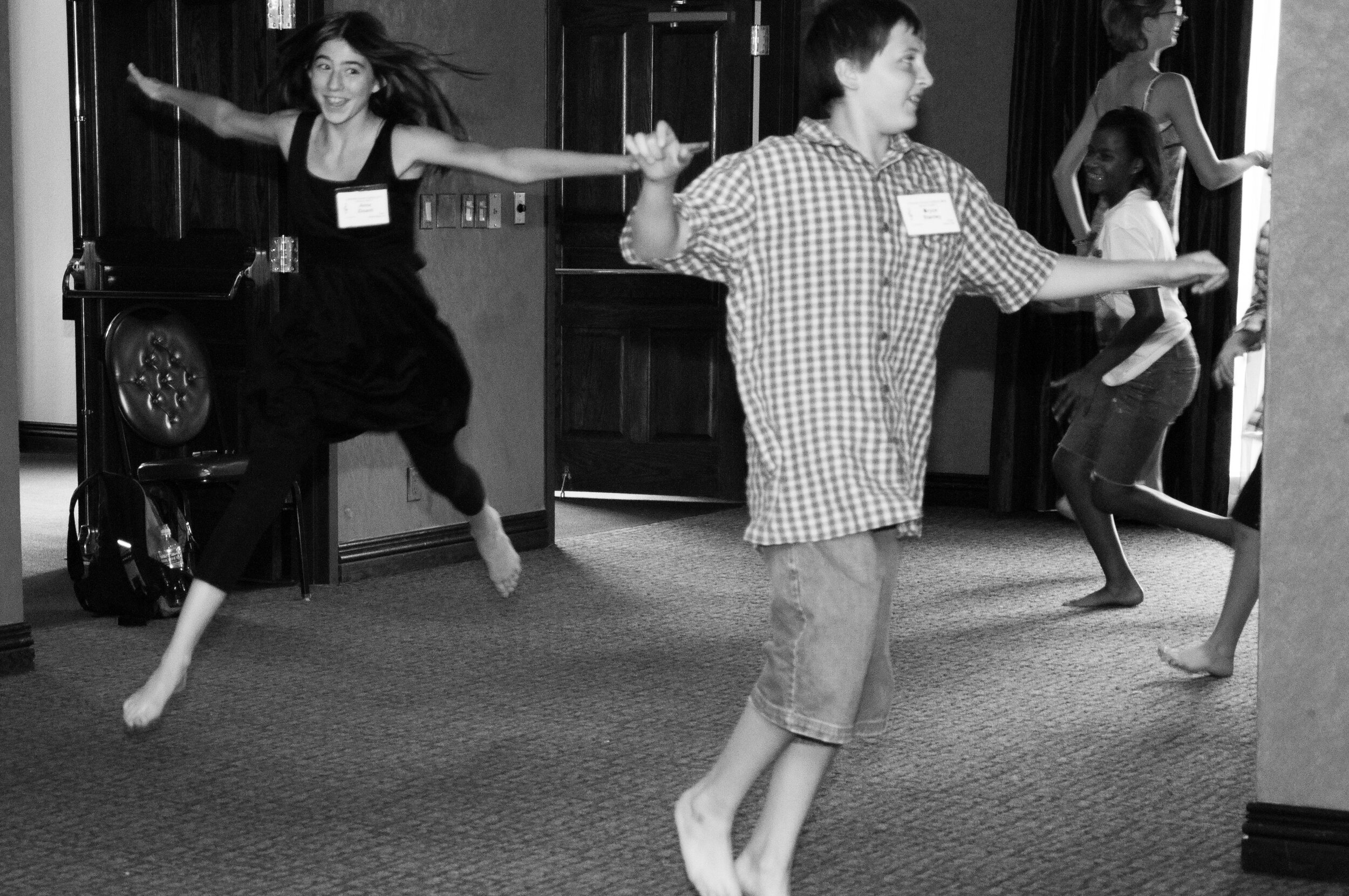Advanced Dalcroze for Jr. and Sr. High Students
In-Person and Virtual Options
Intense Joy Coupled with Profound Learning…through the Body!
For students ages 11-17, The Dalcroze School of Music and Movement offers Advanced Dalcroze classes that allow students to study music at a deep level and eventually prepares students to succeed at the College Board’s Advanced Placement Exam in Music Theory.
Our Advanced Dalcroze Courses build off of all the knowledge and information acquired in the Rhythmic-Solfège courses. All of this information is assumed knowledge for the start of any Advanced Dalcroze Course.
Benefits of this education include improved intonation, finer listening capability, better ensemble skills, energetic rhythmic and metric vitality, and a deepened understanding of musical analysis, nuance, and aesthetics as they relate to performance.
The complete Advanced Dalcroze (AD) course offering provides students with excellent instruction and a deep appreciation of music through purposeful movement. All classes are 75 minutes long and meet once per week for 28 weeks.
AD Plastique Animée. Students must be 11 or must have finished Rhythmic-Solfège V (or equivalent) to register. Since the materials and concepts change from year to year, students may enroll in this course more than once.
AD Advanced Placement Music Theory I. Students must be in 7th grade at the minimum (or have the permission of the director) to enroll in this course. They must have finished Rhythmic-Solfège V (or equivalent) to register. Throughout the 3 year sequence, students will cover all of the materials put forth by the College Board, plus a variety of other subjects that are interesting and valuable for students to know.
AD Advanced Placement Music Theory II. Students must be in 8th grade at the minimum (or have the permission of the director) to enroll in this course. Students must have passed AP I before they can enroll in AP II.
AD Advanced Placement Music Theory III. Students must be in 9th grade at the minimum (or have the permission of the director) to enroll in this course. Students must have passed AP II before they can enroll in AP III. Students who finish this course will have all studied all of the necessary materials to take the College Board’s AP Music Theory Exam at a local high school of their choice. Students must set up their own registration through their guidance counselor.
Why Pursue Advanced Dalcroze?
We Foster Active, Joyful Learning
We Champion the BODY as our primary instrument
We Develop the Whole Musician
We Cultivate the Ear through Solfège: an Artistic European Tradition
We Inspire Expression, Dedication, and Commitment
Advanced Dalcroze: We Study Everything That Will Improve Your Musicianship, no matter what your instrument!
AD Plastique Animée
As in all Dalcroze courses, we will learn music through discovery, purposeful movement, and joy! In Plastique Animée, we will study composed music. For each piece, we will create a visual representation of musical concepts in the score through movement. Read more about Plastique Animée and see examples by clicking here.
We will study an ever-changing selection of pieces each year that represent a survey of Music History.
We will also review and build upon rhythm, solfège, and harmony skills learned in the Rhythmic-Solfège courses.
We will study many aspects of form and structure, including:
Phrase and Period Structures
Binary, Ternary, and Rounded Binary Forms
Song Form
Rondo and Sonata Rondo Forms
Sonata Allegro Form
AD Advanced Placement I:
Rhythm Skills
Simple and Compound Meters with all beat values through the 2nd Subdivision and the 2nd Multiple
Conducting, articulating, and dictating rhythms in Duple, Triple, and Quadruple Meters (both Simple and Compound)
Off-beat Syncopation, Metric Syncopation, and Patterns of Syncopation
Hemiola
Beat equals Beat and Division equals Division Metric changes
Augmentation and Diminution in polyrhythmic relationships
Improvisation of rhythmic patterns
Dictation of basic level rhythmic patterns and phrases
Solfège and Harmony Skills
All major keys and their scales through 7 sharps and 7 flats (sung and written)
All minor keys and their scales (natural, harmonic, and melodic) through 7 sharps and 7 flats (sung and written)
Chord quality and function along with Chord descriptors
All varieties of triads and their inversions (sung and written)
All varieties of 7th chords (sung and written)
Sight-singing that is mostly scalar, arpeggiates the tonic and the dominant with the occasional neighbor tone. We sing using scale degree numbers for function and letter names for pitch.
Introductory Harmonic Analysis using Roman Numeral and Figured Bass with music from the standard repertoire and simple 4-part chorales.
Basic harmonization techniques and chord progressions
Improvisation of melodic patterns and motifs
Basic analysis of simple forms: Binary form, Ternary form, Song form
AD Advanced Placement II:
Rhythm Skills
Complete Review of AP I
Complex Meters with all beat values through the 2nd Subdivision and the 2nd Multiple
Conducting, articulating, and dictating rhythms in Duple, Triple, and Quadruple Meters (Simple, Compound, and Complex)
Beat equals Beat and Division equals Division Metric changes
Improvisation of rhythmic patterns
Dictation of intermediate level rhythmic patterns and phrases
Solfège and Harmony Skills
Complete Review of AP I
Chord quality and function along with Chord descriptors
All varieties of triads and their inversions (sung and written)
All varieties of 7th chords and their inversions (sung and written)
Sight-singing that includes more leaps, including arpeggiation of the tonic, the dominant, and intermediate harmonies. We sing using scale degree numbers for function and letter names for pitch.
Intermediate Harmonic Analysis using Roman Numeral and Figured Bass
Intermediate harmonization techniques and chord progressions including progressions of descending 5ths, 3rds, and some sequences.
Harmonic function as passing chords, neighbor chords, pedal chords, arpeggiated chords, and use of the cadential 6-4
Realization of a Figured Bass and/or Roman Numeral Analysis in 4 part chorale style
Improvisation of melodic patterns and motifs
Basic analysis of more advanced forms: Rounded Binary forms, Rondo forms, Sonata Rondo forms
Non-harmonic tones: Analysis, Dictation, and Notation of
Passing Tones
Neighbor Tones (complete and incomplete, chromatic and diatonic, double)
Escape Tones
Appoggiaturas
Changing Tones
Cambiata
Trills and Turns
Suspensions (4-3, 7-6, 9-8)
Retardations
Anticipations
AD Advanced Placement III:
Rhythm Skills
Complete Review of AP II
Changing Meters of all kinds
Advanced Polyrhythms: 2:3, 3:4, etc.
Improvisation of rhythmic patterns
Dictation of intermediate level rhythmic patterns and phrases
Solfège and Harmony Skills
Complete Review of AP II
Sight-singing that includes leaps, arpeggios, and some chromatic inflection. We sing using scale degree numbers for function and letter names for pitch.
Advanced Harmonic Analysis using Roman Numeral and Figured Bass, including Applied Chords (Secondary Dominant/Leading-tone harmony) and Modulation
Intermediate harmonization techniques and chord progressions, including Sequences, Applied Chords, and Modulation
Realization of a Figured Bass and/or Roman Numeral Analysis in 4 part chorale style, including Applied Chords and Modulation
Improvisation of melodic patterns and motifs
Form and Analysis in relationship to harmony and melody.
Introduction to Counterpoint, motif, motivic development, and sequence
Phrase and Period Structures
Review of all large scale forms
Modes
C clefs
Transposing Instruments
Class Details
Advanced Dalcroze Classes Meet virtually. Students should bring a large 3 ring binder, a metallophone, staff paper, notebook paper, a pencil, and their metallophone to class each week. Classes are 75 minutes long and meet for 28 weeks. See the Youth Calendar for more information.
“My daughter thrived with Jeremy and all the wonderful instructors at The Dalcroze School of the Rockies! She will never approach music the same way again and has a deep understanding of what it means to learn music through the body.”
“I would like to thank you for a wonderful class; [it] was very fun and beneficial. I now totally understand how using Dalcroze can teach you to stay together and feel the rhythm and beat!”
Click on the link below to watch an excerpt from a class of Rhythmic-Solfège V and Advanced Dalcroze students present at the 2020 Dalcroze Society of America National Conference…the students were fabulous!
Questions
If you are unsure about your child's appropriate level, would like to schedule an audition, or have general questions, please reach out to us. We'd love to hear from you.
Let the music soar within you!
“I love the dynamic energy of the Dalcroze classroom: students poised with razor-sharp ears, tuned into every nuance coming from the piano, and ready to demonstrate with their bodies everything they hear. This type of learning inspires creativity, alive with the possibility of new discoveries at every turn, leap, and gesture. When students acquire the habit of listening with this type of intensity, they begin to develop fluency in the language of music and their artistic potential can grow exponentially!”
